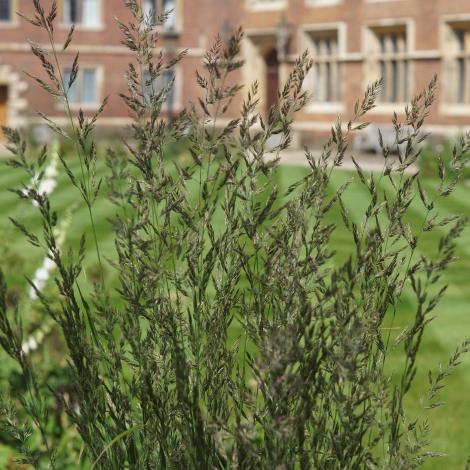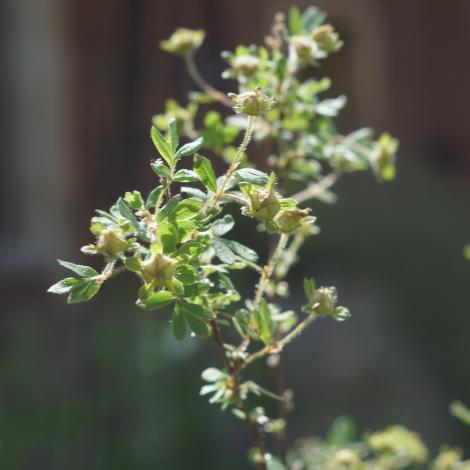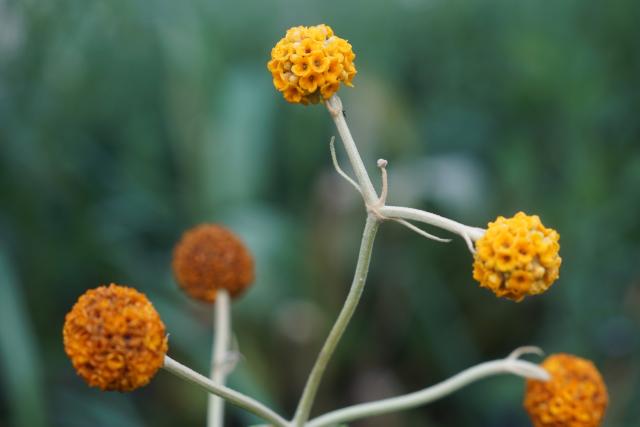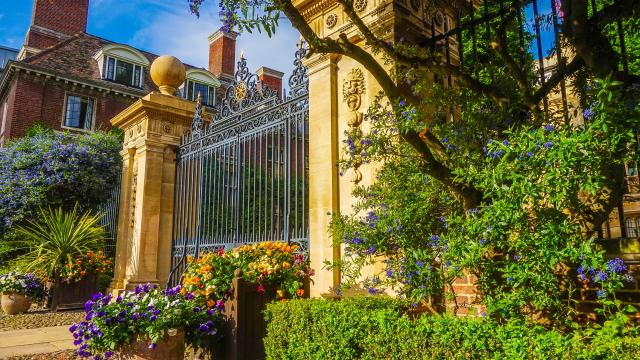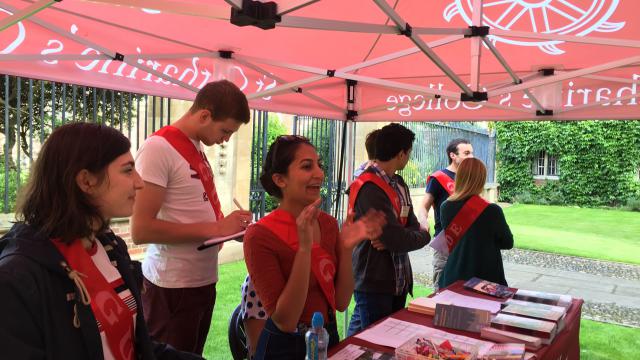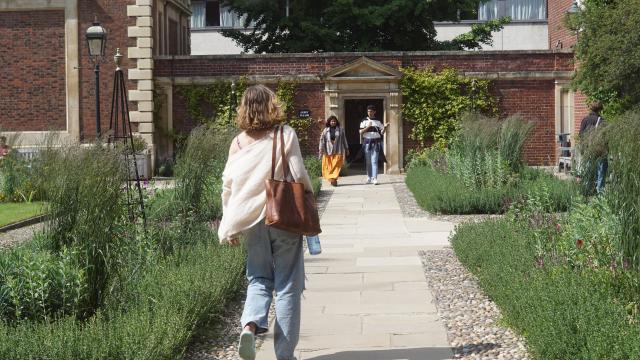
St Catharine’s is delighted that new plants have been introduced to the gardens in Main Court to celebrate John Ray and Adam Buddle, two alumni who made important contributions to botany in the late 17th and early 18th centuries at an exciting time for science in Cambridge, as indicated by the professorships established by the University in Chemistry (1702), Astronomy and Experimental Philosophy (1704), Anatomy (1707), Botany (1724) and Geology (1728).
The new plants are thanks to a collaboration involving Alan North, Head Gardener at St Catharine’s, Professor David Aldridge (1997), Professor Matthew Mason (2001) and Professor Bill Sutherland (Fellow 2008–23; Honorary Fellow 2024).
Alan commented, “Gardens have developed different purposes over the centuries: the cultivation of medicinal plants (physic gardens) and the study and teaching of botany (botanic gardens) as well as the enjoyment of plants and leisure activities. Gardens would have been vital to the work of Ray and Buddle so I like to think they would appreciate our nod to their achievements through our choice of plants.”
Professor Sutherland added, “St Catharine’s was one of the poorer Cambridge Colleges in Ray and Buddle’s lifetimes, so it is remarkable that these brilliant minds were studying here in quick succession. They saw the world very differently from the generations before them, as shown by Ray and Buddle making early attempts to classify the natural world around them. St Catharine’s has developed in the proceeding centuries, but we still owe a lot to these pioneers and can draw inspiration from their endeavours.”
John Ray (1627–1705)
Among the undergraduates at St Catharine’s during the mid-seventeenth century was the naturalist and botanist John Ray, whose classification of plants in his Historia Plantarum was an important step towards the development of modern taxonomy. Born the son of a blacksmith, he entered St Catharine’s as a sizar: a student financing his studies by undertaking domestic tasks within the College. Although he taught Greek, mathematics and humanity at Trinity College, he spent much of his time studying natural history and was elected a Fellow of the Royal Society in 1667. His work such as the 1703 Methodus which classified 18,000 species influenced Linnaeus and earned him the title ‘the father of English natural history’. Today, all science students are automatically enrolled as members of the John Ray Society on admission to St Catharine’s.
Ray was the first botanist to distinguish monocotyledons (commonly referred to as monocots, which grow from only one embryonic leaf) from dicotyledons (or dicots, which grow from two embryonic leaves). Plants representing both groups have been added to the flowerbeds on the eastern edge of Main Court:
- Potentilla fruitcosa (known as shrubby cinquefoil) was first documented by Ray and is an example of a dicot. It has been planted to the south of the College’s main gates beneath the Ceanothus (Californian Lilac).
- Calamagrostis x acutiflora (feather reed grass) is an example of a monocot. It has been planted to add height and movement to the four flowerbeds between the main gates and the lawn in Main Court.
|
Adam Buddle (c. 1662–1715)
Born in the village of Deeping St James near Peterborough, Adam Buddle was a clergyman and a distinguished botanist who graduated from St Catharine’s in 1681/2 and was elected a Fellow in 1686. He remained a Fellow until 1691 when he was ejected as a non-juror (refusing to swear allegiance to William III and Mary II). He married in 1695 and (once he had sworn allegiance to the Crown) was ordained as a priest in 1702, when he became rector of North Fambridge in Essex. He also served as reader at the chapel of Gray’s Inn, where he was buried.
Buddle’s admission to St Catharine’s was the first of many ways in which he followed in Ray’s footsteps: his contributions to botany were considerable (particularly the study of byrophytes) and he even visited and likely assisted Ray in the years immediately before the latter’s death. The Sloane collection at the Natural History Museum in London includes Buddle’s herbarium and the unpublished manuscript for his English Flora from 1708, which an important manuscript in botanical history. Legend has it that Linnaeus, the renowned Swedish botanist, named the genus Buddleja in Buddle’s honour at the suggestion of William Houstoun.
While the St Catharine’s gardens have included varieties of Buddleja over previous generations, there hasn’t been one for sometime so there was an appetite for including a new plant as a tribute to Buddle. A Buddleja globose plant has been added to each of the four flowerbeds between the main gates and the lawn in Main Court, with globe-shaped flowers in an eye-catching shade of orange.
Find out more about studying Natural Sciences at St Catharine’s.

